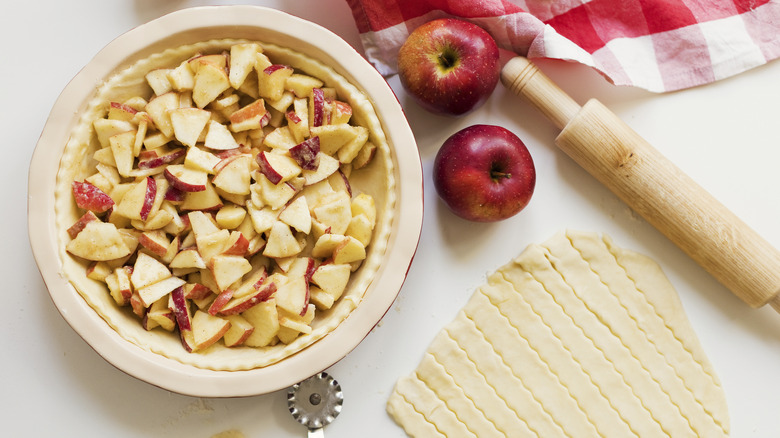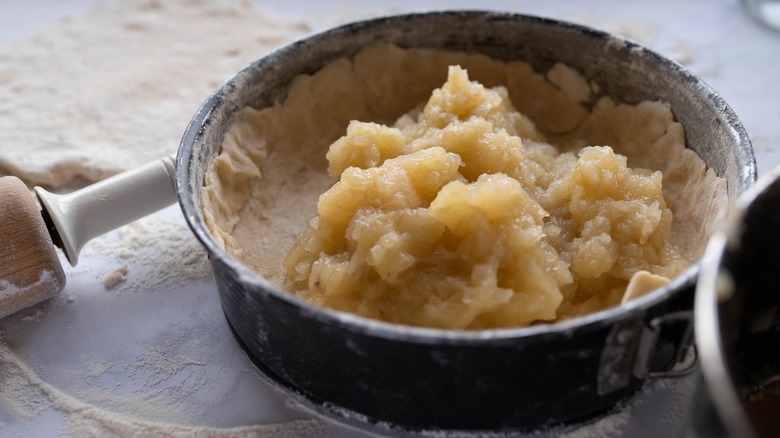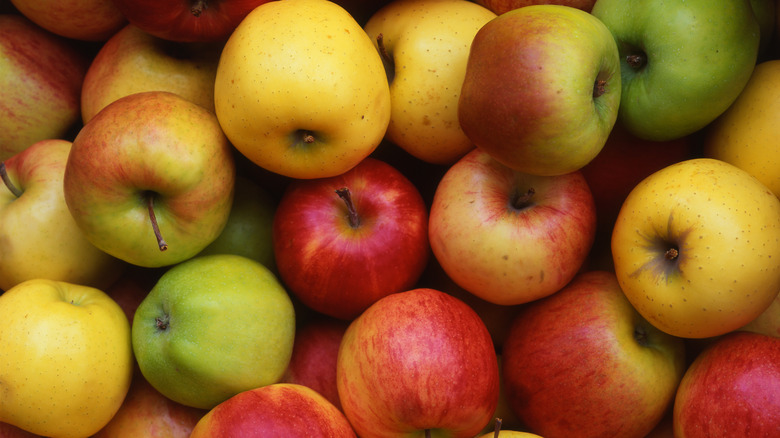Here's How Many Apples You Need For Your Apple Pie
Apple pie is a classic American dessert that can either be really delicious and neat-looking or mediocre, even borderline awful. I'm a sucker for the apple pies from McDonalds, and don't really know if there's any competition, but it is nice to know how to make one for yourself, too. You have to know the right amount of apples to use or you're in for a disaster. If you're anything like me, you'd be heartbroken to have put in all the work that it takes to make a perfect apple pie, just for it to turn out a hot mess.
A pie that's too sparse will have everyone side-eyeing you with disappointment, wondering how you messed it up. If it's overstuffed, you risk terrible spills in the oven. Surprisingly, there's more to consider than just filling the pan. The type and size of the apples, the size of the pie pan, and even the apple varieties you choose all play a role in achieving that ideal pie texture and flavor.
Presentation matters, folks, as the right number of apples means you get a beautifully domed top crust that looks as good as it tastes. Estimating the number of apples can feel like a guessing game for many home bakers, but I can help you take the guesswork out of the equation with a few tips. For starters, the number of apples you'll need mostly depends on the size of your pie pan.
The size of your pie pan matters
If you have a standard 9-inch pie pan (which is a common choice for most recipes), you'll need six or seven medium-sized apples to create a full, evenly packed filling. Medium apples typically weigh around 6 ounces each. So, in total, you're looking for about 2 to 2 ½ pounds of fruit. For an 8-inch pie pan, five or six medium apples should be enough. If you're using a 10-inch pan, you'll need eight or nine apples to make sure you have a good apple distribution in each slice.
To get the right consistency, I can't express how important it is to chop and layer your apples properly. Slicing them thinly and evenly allows them to soften and absorb the spices like cinnamon while baking. Different varieties, like Granny Smith, Honeycrisp, or Fuji, also vary in water content; so keep that in mind. Drier apples like Granny Smith hold their shape well, while juicier ones like Fuji will create a slightly softer filling.
Choosing the right apple types for texture and flavor
Like I said: Beyond just counting apples, the type of apple you choose can make or break your pie. Many bakers swear by Granny Smith apples for their tartness and firmness, which contrasts nicely with the added sugar and spices. Honeycrisp apples are also a popular choice, giving you a sweet, juicy bite with a firm texture that holds up well during baking. Mixing apple types (like pairing Granny Smith with Honeycrisp or Golden Delicious) can balance the pie's flavor and texture, bringing out the best of both worlds.
For a 9-inch pie, if you're mixing varieties, aim for three Granny Smith apples and three Honeycrisp apples. This combination allows for a structured, slightly tart filling that doesn't become mushy. As I stated before, though, keep the water content in mind because you might need to consider pre-cooking or lightly sautéing particularly juicy varieties before adding them to the crust. A runny filling is not it. Keeping these tips in mind can help you churn out a pie that'll have your family and friends begging you for this cozy apple recipe.


